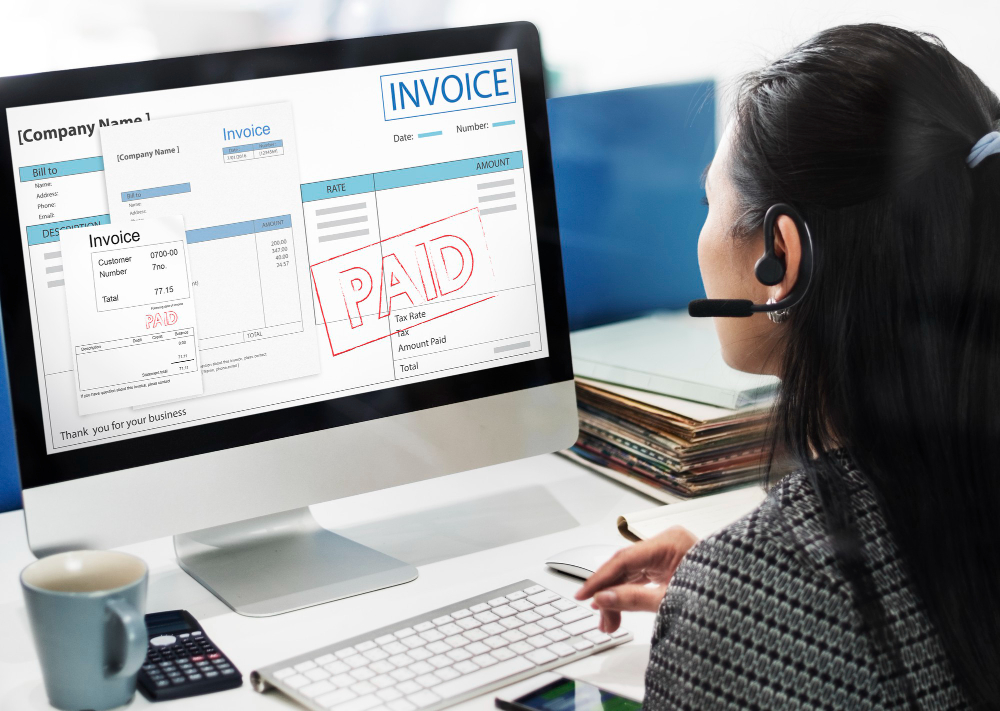
Introduction
Invoices are the heartbeat of every business. Whether you’re a retailer, manufacturer, or service provider — getting paid on time keeps your business alive. But manual invoicing often means lost papers, slow approvals, and costly errors.
That’s where e-Invoicing comes in — a smarter, faster, and more transparent way to manage your invoices digitally. With Malaysia’s push towards e-Invoicing compliance under LHDN (Inland Revenue Board), now is the perfect time for businesses to understand the real benefits of e-Invoicing and how it can transform financial operations.
What Is E-Invoicing?
E-Invoicing (electronic invoicing) is a digital system that creates, sends, receives, and stores invoices electronically — instead of relying on printed paper or PDFs sent via email.
Each e-invoice follows a structured digital format that can be automatically processed by accounting systems or tax authorities. In Malaysia, the LHDN mandates a specific format for businesses to ensure transparency and traceability.
So, e-Invoicing isn’t just going paperless — it’s about automating how invoices are shared, verified, and approved across systems.
1. Faster Payments and Improved Cash Flow
Traditional invoicing often involves waiting days (or even weeks) for approval and payment. With e-Invoicing, everything happens digitally — invoices are instantly sent, received, and validated by your client’s system.
This reduces payment delays, improves cash flow, and helps you maintain steady working capital. Businesses that adopt e-invoicing often report up to 60% faster payment cycles.
2. Lower Operational Costs
Printing, mailing, and manually handling invoices take time and money. On average, a paper invoice can cost RM5–RM10 to process. E-invoicing eliminates these costs by moving everything online.
No printing. No courier charges. No physical storage.
You save resources, reduce paper waste, and make your finance department more efficient.
3. Reduced Human Error
Manual data entry is one of the biggest causes of invoice errors — wrong totals, missing tax codes, or incorrect client details.
E-Invoicing eliminates manual input because invoices are created and transmitted automatically between systems. That means fewer disputes, fewer re-submissions, and more trust between you and your clients.
4. Enhanced Tax Compliance (Especially for Malaysia’s LHDN System)
Malaysia’s LHDN e-Invoicing mandate is designed to make businesses more compliant and transparent. Using an e-invoicing system helps your company automatically generate invoices that meet the LHDN’s structured data format.
This means:
- No more worries about manual compliance checks.
- Seamless reporting to tax authorities.
- Easier audit trails and reduced risk of penalties.
By switching early, your business stays compliant and gains a competitive advantage.
5. Real-Time Tracking and Transparency
E-Invoicing gives both sender and receiver a real-time view of invoice status — whether it’s been sent, received, approved, or paid.
This transparency eliminates uncertainty, reduces back-and-forth communication, and strengthens client relationships.
Your finance team can instantly know which invoices are pending and which have been settled — allowing for better financial planning.
6. Environmentally Friendly
Every paper invoice printed and delivered adds to your business’s carbon footprint.
E-Invoicing helps reduce waste and supports corporate sustainability goals. By going digital, you’re not just saving money — you’re contributing to a greener planet.
7. Seamless Integration with Accounting and ERP Systems
Most modern accounting and ERP solutions — like Million’s Accounting with Invoicing System supports e-invoicing integration.
This means:
- Invoices are automatically generated when sales are made.
- Data is synced with inventory, tax, and financial records.
- Human intervention is minimal.
For businesses that handle hundreds of invoices each month, this automation is a massive productivity booster.
8. Better Data Security
Paper invoices can be lost or forged, but e-invoices are digitally stored and encrypted, keeping your financial data secure.
You can track every invoice, control who accesses them, and back them up on cloud servers — ensuring your financial records are always safe.
9. Easier Reporting and Analytics
Because e-invoicing systems store structured digital data, generating reports is instant. You can easily:
- Analyze payment trends.
- Track client performance.
- Forecast cash flow.
This data-driven insight helps business owners make smarter financial decisions.
10. Future-Ready for Digital Transformation
The global move toward digitalization isn’t slowing down — and Malaysia is no exception. Businesses that adopt e-invoicing today are setting themselves up for long-term success.
It’s not just a compliance step — it’s part of your digital transformation journey, helping your business become more efficient, transparent, and competitive.
Why Businesses in Malaysia Should Adopt E-Invoicing Now
Starting early means your business has time to:
- Test and adjust systems before LHDN deadlines.
- Train your accounting and finance teams.
- Enjoy cost savings and faster billing cycles immediately.
The earlier you adopt, the smoother the transition — and the stronger your compliance position when regulations become fully enforced.
FAQs
Q1: Is e-invoicing mandatory in Malaysia?
Yes, LHDN is gradually implementing e-invoicing for businesses of all sizes. Adopting it early ensures compliance and smoother adaptation.
Q2: Do I need special software to issue e-invoices?
Yes, your business needs an LHDN-compliant e-invoicing system or integrated ERP solution, like those offered by Million.
Q3: Can e-invoicing work for small businesses?
Absolutely. E-invoicing helps SMEs save costs, improve accuracy, and get paid faster — benefits that are even more valuable for smaller businesses.
Q4: How does e-invoicing help with tax audits?
Because all invoices are recorded digitally, audit trails are clear and accessible. This makes tax reporting and verification easier.
Q5: Is e-invoicing secure?
Yes — e-invoicing platforms use encryption and secure cloud storage to keep data safe from unauthorized access or loss.
Conclusion
Switching to e-invoicing isn’t just about compliance — it’s about running your business smarter. From cutting costs to improving accuracy and boosting cash flow, e-invoicing brings measurable benefits that manual invoicing can’t match.
If you’re ready to future-proof your business with digital billing, explore how Million or your preferred ERP provider can help you implement a complete e-invoicing system that’s fast, secure, and compliant with Malaysia’s LHDN requirements.







